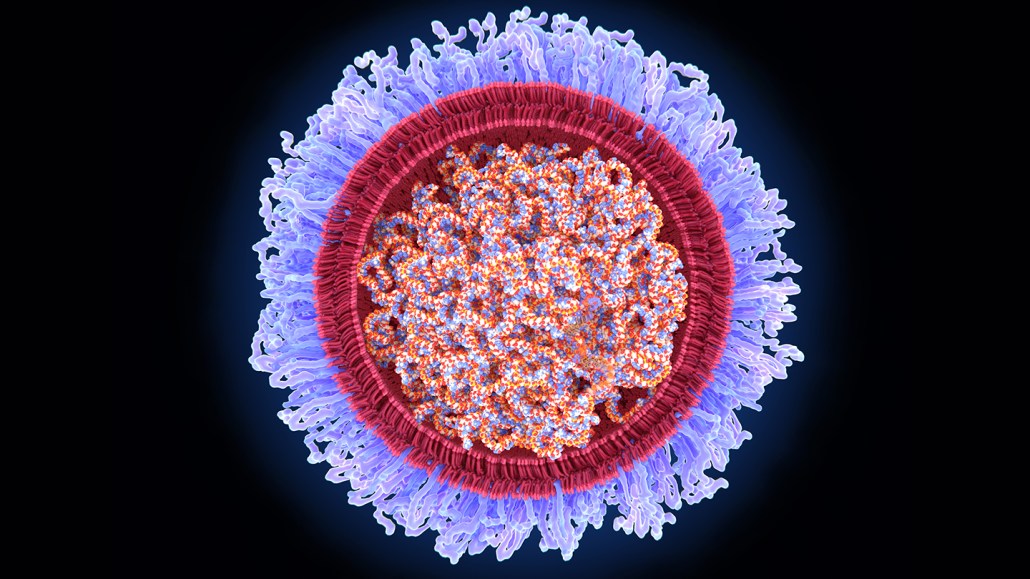These are the viruses that mRNA vaccines may take on next
Clinical trials are in the works for shots against influenza, HIV and more

A COVID-19 mRNA vaccine (illustrated here) consists of mRNA strands (center) encased in a lipid nanoparticle sphere (red) and a polymer coating (purple). The mRNA tells cells to make a coronavirus protein to train the immune system to attack the actual virus if it invades.
Juan Gaertner/Science Photo Library/Getty Images







